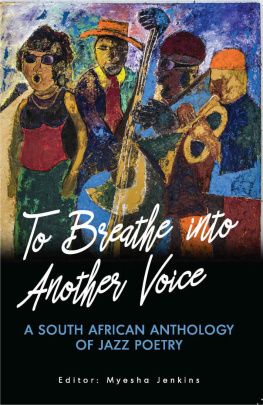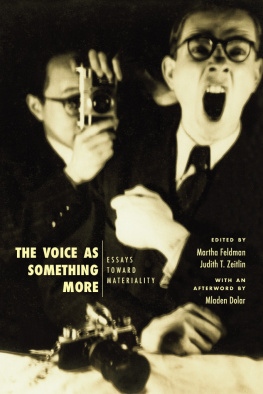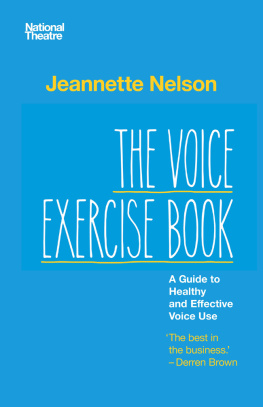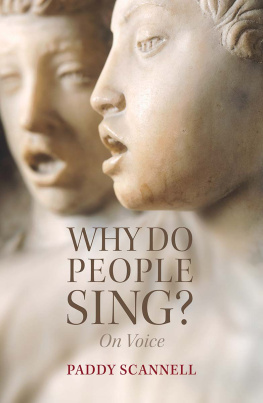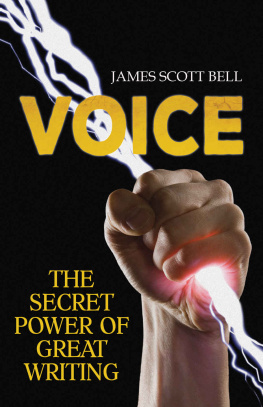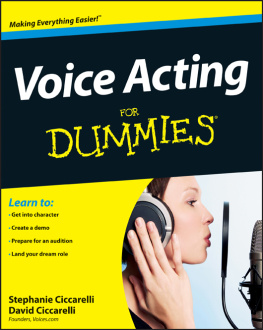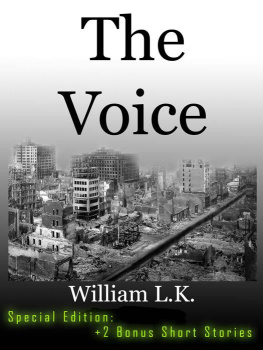VOICE
Leonardo
Roger F. Malina, Executive Editor
Sean Cubitt, Editor-in-Chief
Uncanny Networks: Dialogues with the Virtual Intelligentsia, Geert Lovink, 2002
Information Arts: Intersections of Art, Science, and Technology, Stephen Wilson, 2002
Virtual Art: From Illusion to Immersion, Oliver Grau, 2003
Women, Art, and Technology, edited by Judy Malloy, 2003
Protocol: How Control Exists after Decentralization, Alexander R. Galloway, 2004
At a Distance: Precursors to Art and Activism on the Internet, edited by Annmarie Chandler and Norie Neumark, 2005
The Visual Mind II, edited by Michele Emmer, 2005
CODE: Collaborative Ownership and the Digital Economy, edited by Rishab Aiyer Ghosh, 2005
The Global Genome: Biotechnology, Politics, and Culture, Eugene Thacker, 2005
Media Ecologies: Materialist Energies in Art and Technoculture, Matthew Fuller, 2005
New Media Poetics: Contexts, Technotexts, and Theories, edited by Adalaide Morris and Thomas Swiss, 2006
Aesthetic Computing, edited by Paul A. Fishwick, 2006
Digital Performance: A History of New Media in Theater, Dance, Performance Art, and Installation, Steve Dixon, 2006
MediaArtHistories, edited by Oliver Grau, 2006
From Technological to Virtual Art, Frank Popper, 2007
META/DATA: A Digital Poetics, Mark Amerika, 2007
Signs of Life: Bio Art and Beyond, Eduardo Kac, 2007
The Hidden Sense: Synesthesia in Art and Science, Cretien van Campen, 2007
Closer: Performance, Technologies, Phenomenology, Susan Kozel, 2007
Video: The Reflexive Medium, Yvonne Spielmann, 2007
Software Studies: A Lexicon, Matthew Fuller, 2008
Tactical Biopolitics: Theory, Practice, and the Life Sciences, edited by Beatriz da Costa and Kavita Philip, 2008
White Heat and Cold Logic: British Computer Art 19601980, edited by Paul Brown, Charlie Gere, Nicholas Lambert, and Catherine Mason, 2008
Curating New Media Art, Beryl Graham and Sarah Cook, 2010
Green Light: Toward an Art of Evolution, George Gessert, 2010
VOICE: Vocal Aesthetics in Digital Arts and Media, edited by Norie Neumark, Ross Gibson, and Theo van Leeuwen, 2010
Enfoldment and Infinity: An Islamic Genealogy of New Media Art, Laura U. Marks, 2010
See for a complete list of titles in this series.
VOICE
Vocal Aesthetics in Digital Arts and Media
edited by Norie Neumark, Ross Gibson, and Theo van Leeuwen
The MIT Press
Cambridge, Massachusetts
London, England
2010 [Massachusetts Institute of Technology
All rights reserved. No part of this book may be reproduced in any form by any electronic or mechanical means (including photocopying, recording, or information storage and retrieval) without permission in writing from the publisher.
For information about special quantity discounts, please email .
Library of Congress Cataloging-in-Publication Data
Voice : vocal aesthetics in digital arts and media / edited by Norie Neumark, Ross Gibson, and Theo van Leeuwen.
p. cm. (Leonardo books)
Includes bibliographical references and index.
ISBN 978-0-262-01390-1 (hardcover : alk. paper)
ISBN 978-0-262-30269-2 (retail e-book)
CommunicationSocial aspects. 2. VoiceSocial aspects. 3. Technology and the arts. 4. New media art. I. Neumark, Norie. II. Gibson, Ross, 1956 III. Van Leeuwen, Theo, 1947 IV. Title: Vocal aesthetics in digital arts and media.
P95.54.V65 2010
302.23dc22
2009038444
10 9 8 7 6 5 4 3 2 1
Series Foreword
The arts, science, and technology are experiencing a period of profound change. Explosive challenges to the institutions and practices of engineering, art making, and scientific research raise urgent questions of ethics, craft, and care for the planet and its inhabitants. Unforeseen forms of beauty and understanding are possible, but so too are unexpected risks and threats. A newly global connectivity creates new arenas for interaction between science, art, and technology but also creates the preconditions for global crises. The Leonardo Book series, published by the MIT Press, aims to consider these opportunities, changes, and challenges in books that are both timely and of enduring value.
Leonardo books provide a public forum for research and debate; they contribute to the archive of art-science-technology interactions; they contribute to understandings of emergent historical processes; and they point toward future practices in creativity, research, scholarship, and enterprise.
To find more information about Leonardo/ISAST and to order our publications, go to Leonardo Online at <>.
Sean Cubitt
Editor-in-Chief, Leonardo Book series
Leonardo Book Series Advisory Committee: Sean Cubitt, Chair; Michael Punt; Eugene Thacker; Anna Munster; Laura Marks; Sundar Sarrukai; Annick Bureaud
Doug Sery, Acquiring Editor
Joel Slayton, Editorial Consultant
Leonardo/International Society for the Arts, Sciences, and Technology (ISAST)
Leonardo, the International Society for the Arts, Sciences, and Technology, and the affiliated French organization Association Leonardo have two very simple goals:
1. to document and make known the work of artists, researchers, and scholars interested in the ways that the contemporary arts interact with science and technology and
2. to create a forum and meeting places where artists, scientists, and engineers can meet, exchange ideas, and, where appropriate, collaborate.
When the journal Leonardo was started some forty years ago, these creative disciplines existed in segregated institutional and social networks, a situation dramatized at that time by the two cultures debates initiated by C. P. Snow. Today we live in a different time of cross-disciplinary ferment, collaboration, and intellectual confrontation enabled by new hybrid organizations, new funding sponsors, and the shared tools of computers and the Internet. Above all, new generations of artist-researchers and researcher-artists are now at work individually and in collaborative teams bridging the art, science, and technology disciplines. Perhaps in our lifetime we will see the emergence of new Leonardos, creative individuals or teams that will not only develop a meaningful art for our times but also drive new agendas in science and stimulate technological innovation that addresses todays human needs.
For more information on the activities of the Leonardo organizations and networks, please visit our Web sites at and .
Roger F. Malina
Chair, Leonardo/ISAST
ISAST Governing Board of Directors: Roger Malina, Jeffrey Babcock, Greg Harper, Meredith Tromble, Michael Joaquin Grey, John Hearst, Sonya Rapoport, Beverly Reiser, Christian Simm, Joel Slayton, Tami Spector, Darlene Tong, Stephen Wilson
Preface
There are some questions about the voice and technology that do not go away. What happens, for example, when the distinction between the human voice and the voice of the machine is blurred? Can we still distinguish between genuine and synthetic affect? Should we? Can we still distinguish between the uniqueness of an individuals voice and the social and cultural determinations that shape its performance? Should we even try to do so? This book is an interdisciplinary investigation of questions of this kind as they have been articulated and investigated by historians, philosophers, cultural theorists, film scholars, and artists and designers working in fields such as dance, poetry, music, film, and computer games. The book examines the recording, distribution, and synthesis of the voice, the way voices perform in contexts of technology, and the influence of changing voice technologies on mainstream media such as recorded music, film, and computer games, as well as a range of other themes relating to the ongoing power and centrality of the voice in social and cultural life.
Next page



